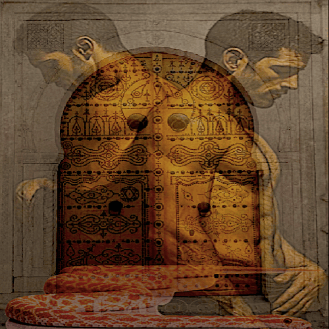Behind the Curtain: Bell Media’s Tight Grip on Truth and the Silencing of French Acadian Voices
CTV Atlantic purports to embrace inclusivity while persistently excluding French Acadian perspective mirrors broader cultural dynamics of Halifax

French Acadians have long been a vibrant thread in the cultural fabric of Nova Scotia, yet their representation in mainstream media still needs to be improved. Bell Media, particularly its CTV Atlantic branch, is a glaring example, which purports to embrace inclusivity while persistently excluding French Acadian perspectives. This systemic oversight mirrors the broader cultural dynamics of Halifax, a city whose institutions, including its universities, perpetuate the erasure of Acadian voices.
The Unheard Voices: Bell Media’s Silence on French Acadian Culture

In this article, we delve into the dissonance between Bell Media's stated mission and actions, explore the endemic marginalization of French Acadians in Halifax universities, and examine how Edward Cornwallis's legacy lingers in contemporary Anglo-centric media and academia. Finally, we spotlight the growing unrest in the Acadian community, highlighting their calls for meaningful change and not waiting for permission to be heard but demanding, Dans ta Face.
Bell Media's Mission vs. Reality: A Promise Unfulfilled

As the parent company of CTV Atlantic, Bell Media champions inclusivity and diversity, claiming to represent the many cultural communities that define Nova Scotia. However, French Acadians, one of the province's most historically significant ethnic groups, are conspicuously absent from their coverage.
This lack of representation is not merely an oversight but a recurring pattern. French Acadian stories, events, and issues are routinely sidelined in favour of narratives that align with the dominant Anglo-centric culture. For example, while there is extensive coverage of Nova Scotia's Celtic heritage, Mi'kmaq culture, and African Nova Scotian communities, the French Acadian experience is invisible.
This omission is particularly egregious given the Acadians’ unique history in Nova Scotia, from their settlement in the 1600s to their forced expulsion in 1755, known as Le Grand Dérangement. Despite their resilience and enduring cultural contributions, Acadians remain the most visibly underrepresented ethnic minority in the province. This raises an uncomfortable question: how can Bell Media claim to represent all communities while neglecting one so integral to the province’s identity?
Halifax Universities: Gatekeepers of Anglo-Centric Narratives
The marginalization of French Acadians extends beyond media into Halifax’s academic institutions. Universities in the province, including Dalhousie, Saint Mary’s, and Mount Saint Vincent, often adopt an Anglo-dominant perspective in their curricula and institutional practices.
Despite the rich French Acadian history that could serve as fertile ground for academic exploration, limited courses, programs, or research initiatives are dedicated to their study. French-language programs, when available, often focus on global Francophone cultures rather than the Acadian experience. Moreover, Acadian students and scholars frequently report feeling excluded or tokenized within these institutions.
This lack of representation contributes to the broader erasure of French Acadian culture in public discourse. As pillars of knowledge and social influence, universities play a crucial role in shaping cultural narratives. Failing to prioritize the Acadian story reinforces the perception that it is unworthy of attention, perpetuating a cycle of neglect.
A Lingering Legacy: Edward Cornwallis and the Halifax Anglo-Culture
The systemic marginalization of French Acadians in media and academia is rooted in a historical context that cannot be ignored. Edward Cornwallis, the British colonial governor who founded Halifax in 1749, is a figure emblematic of Anglo dominance and the suppression of other cultures. His policies, including the infamous scalping proclamation against the Mi'kmaq, set the tone for an exclusionary cultural hierarchy that persists to this day.
This legacy manifests in a cultural landscape in modern Halifax, where Anglo-centric narratives dominate. French Acadians, along with other marginalized groups, are relegated to the periphery. Symbols of this historical imbalance, such as the Cornwallis statue (now removed but still a point of contention), are stark reminders of the city’s colonial foundations.
The parallels between Cornwallis-era policies and contemporary practices of exclusion are unsettling. While the methods have changed, the outcomes remain strikingly similar: the voices of French Acadians are systematically silenced, and their contributions to Nova Scotia’s history and culture are overlooked.
A Call for Change: The Acadian Community Speaks Out for Inclusion:
Faced with persistent marginalization, the Acadian community in Nova Scotia is increasingly vocal about the need for change. Grassroots movements, cultural organizations, and individual advocates are working to draw attention to the injustices they face and to reclaim their place in the province’s artistic narrative.
One such example is the growing presence of Acadian voices on self-publishing platforms, where they bypass traditional media gatekeepers to share their stories. These efforts are bolstered by Acadian artists, writers, and musicians who weave their heritage into their work, ensuring their culture is preserved and celebrated.
The call for change extends beyond the Acadian community. Allies from other marginalized groups, forward-thinking academics, and media professionals recognize that a more inclusive Nova Scotia benefits everyone. By amplifying Acadian voices, the province can move closer to fulfilling the ideals of diversity and inclusivity that institutions like Bell Media claim to uphold.
However, the journey toward meaningful change requires more than words. It demands concrete action, such as increasing French Acadian representation in media and academia, funding Acadian cultural initiatives, and fostering community dialogue. Only by addressing these systemic issues can Nova Scotia begin to heal the divisions that have persisted for centuries.
Conclusion: Beyond Tokenism Candy ass B.S.
As part of Bell Media, CTV News' core principle is to represent ethnocultural groups, Indigenous people, and persons with disabilities in a balanced and accurate manner. Our policy is to seek out diverse voices, not only in the types of stories we cover but also in our sources, on-screen, on-air, behind-the-scenes, and within our workforce. Understanding the composition of Bell Media’s workforce is at the heart of its diversity and inclusion strategy.
Bell Media employees are asked to complete a diversity questionnaire, from which data is analyzed monthly. Reports on this data and action plans are presented to Bell Media’s Diversity Leadership Council to monitor progress against benchmarks and established goals in its efforts to employ and build a diverse workforce.
Our commitment to diversity is also reflected in the types of stories we report on at CTV News. CTV News monitors the statistics of its full-time staff as it is committed to employment equity and diversity. To protect individual privacy, it does not publicly disclose these numbers.
Bell Media and Halifax universities stand at a crossroads. They can continue perpetuating the exclusionary practices that have defined their approach to French Acadian culture or embrace the opportunity to lead by example in fostering true inclusivity.
The Acadian community’s growing unrest is not merely a reaction to historical injustices but a demand for recognition and respect in the present. By addressing these concerns, Nova Scotia can shed the lingering shadow of Edward Cornwallis and build a future that celebrates all its cultural communities.
For Bell Media, this means living up to its mission statement by giving French Acadians the visibility they deserve. Halifax universities must commit to decolonizing their curricula and creating spaces where Acadian voices are valued and heard.
The path forward is clear but requires courage and a willingness to confront uncomfortable truths. As French Acadians continue to advocate for change, the question remains: will Nova Scotia rise to the occasion, or will it remain mired in the past?
The answer lies in the institutions' actions and people's collective will to embrace a more inclusive future. Only then can the promise of diversity in Nova Scotia become a reality rather than an empty platitude.
Here are five FAQs based on the text you provided:
1. Why are French Acadians underrepresented in Nova Scotia's mainstream media?
French Acadians are consistently excluded from mainstream media coverage, especially by Bell Media’s CTV Atlantic, despite the company’s stated commitment to diversity. While other cultural communities receive regular media attention, French Acadian stories and voices are largely ignored, reflecting a systemic bias rooted in Anglo-centric priorities.
2. How do Halifax universities contribute to the marginalization of French Acadian culture?
Universities like Dalhousie, Saint Mary’s, and Mount Saint Vincent often prioritize Anglo-dominant narratives in their academic programming. French-language and Acadian-focused courses are limited, and Acadian students frequently report feeling tokenized or excluded. This scholarly neglect reinforces the broader erasure of Acadian history and identity.
3. What role does the legacy of Edward Cornwallis play in today’s cultural dynamics in Halifax?
Edward Cornwallis, the founder of Halifax, symbolizes the colonial foundation and enduring Anglo-centric cultural dominance in the city. His legacy, marked by policies of exclusion and violence, continues to influence how institutions treat marginalized groups like the French Acadians. The Cornwallis statue may be gone, but the cultural imbalance it represented persists.
4. How are French Acadians responding to this exclusion?
French Acadians increasingly take control of their narrative through self-publishing platforms, artistic expression, and grassroots advocacy. They are no longer waiting for mainstream validation but are instead demanding visibility and inclusion, often through independent media and cultural projects that celebrate their heritage and confront institutional bias.
5. What steps must Bell Media and Halifax institutions take to support the meaningful inclusion of French Acadians?
Bell Media must go beyond token statements to achieve genuine inclusivity and actively include French Acadian perspectives in their programming and staffing. Halifax universities must decolonize their curricula, fund Acadian-focused research, and create safe, equitable spaces for Acadian voices. Only through tangible actions can these institutions begin fulfilling their diversity commitments.
Let me know if you'd like these formatted for web or expanded into a longer FAQ document.
